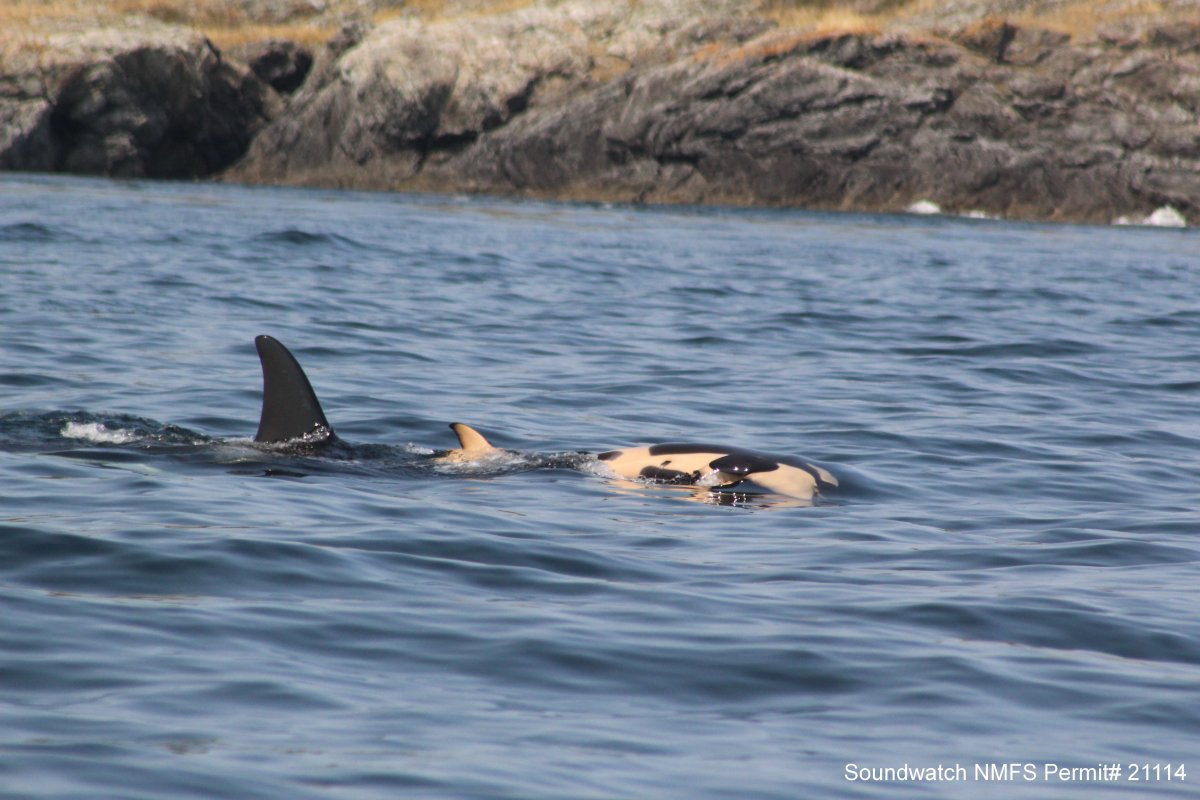She was to be the first baby born to her species of killer whale in three years — and a female who could have birthed her own calf within a decade.

But on Tuesday, only about a half hour after they learned of her birth, observers arrived on scene in the area of the San Juan Islands to find that the calf was deceased.
Her lifeless body has been carried on her mother’s nose through the Salish Sea ever since, a researcher told Global News on Friday.
Coverage of orcas on Globalnews.ca:
The mother orca, known by the moniker “J35,” is a southern resident killer whale — part of a population that’s been listed as endangered in Canada and the U.S.
They numbered as many as 98 in 1995; today, there are only 75 left.
The whales are known to travel between southeastern Alaska to central California, spending much of their time off Vancouver Island and Washington state in the summer.
READ MORE: From 2017 — There were 98 southern resident killer whales in 1995, and there are 76 now
A whale watching boat spotted the mother with a calf that was alive and taking breaths on Tuesday, Taylor Shedd, program coordinator with the San Juan Islands-based organization Soundwatch, told Global News.
The Center for Whale Research arrived on the scene about half an hour after they learned a baby had been born.
They found it dead when they arrived, approximately 30 minutes later.
WATCH: From 2015 — southern resident killer whale calf spotted off Washington coast
“These whales are so critically endangered, we need that reproductive power in the future,” Shedd said.
“So to lose a female or a male, to lose any individual is horrible, but a female may be extra concerning.”
Soundwatch learned Wednesday that the mother was still carrying her calf, and took upon itself the task of ensuring she was safe.
Since then, for as long as the sun is up, they’ve watched a mother carry her dead offspring at the surface and below.
Since the calf was found deceased, Soundwatch has been monitoring J35, watching to ensure she has space to move safely.
On Wednesday, she was travelling alone and displaying strange behaviour for an orca — breathing in an unusual way, Shedd said.
“She was very laboured in her breathing, taking these extra long breaths as she was at the surface,” he said.
Shedd observed more unusual breathing on Thursday — he would see her come to the surface, take a breath, and then see the calf roll off her back or drop out of her mouth before she took a few more breaths.
The whale would then take a “big, fluking dive” where she would show the bottom of her tail as she went “basically vertical” in the water.
“To me that suggests that the calf is very negatively buoyant and that she was having to dive really deep and bring it back up to the surface,” Shedd said.
READ MORE: New endangered Puget Sound orca dies soon after birth
Southern resident killer whales have been spotted carrying dead calves on their heads before — one group of whales was even spotted pushing a dead porpoise, Shedd said.
But it’s still a mystery why the whales do this, he added.
“A lot of us think it’s probably grieving,” Shedd said.
“I think that they’re smart enough to know that this calf isn’t alive and it’s not going to come back.”
“But whatever the grieving process is, these whales, that they carry it, I can’t even begin to pretend what that emotion or stress is like to lose this child and to carry it around.”
Researchers, he said, have been speculating as to why J35 is doing this.
“Is she trying to carry it to a location, maybe to where she gave birth to it?” Shedd asked.
“She’s come back to that point and hasn’t let it go yet, so we don’t know. We have no idea.”
The southern resident killer whale is struggling for numerous reasons.
The National Oceanic Atmospheric Administration (NOAA) has noted three main threats affecting their numbers: contamination, lack of prey, and vessel noise and traffic.
Noise pollution, Shedd said, ties into prey availability.
“Studies and the data show that when there’s lots of vessel noise in the area, that these whales spend less time foraging and more time travelling,” he said.
“So vessel noise and disturbance alters their behaviour so that they’re not feeding as much.”
Nevertheless, researchers like Shedd still have hope that the population can recover.
“Some people are calling this the last generation of the southern residents, it’s at that point where it’s that dire,” he said.
There are other orca population around the world that are thriving, their numbers increasing, Shedd noted.
“I’m hoping people don’t give up that hope.”
- With files from The Associated Press
- High benzene levels detected near Ontario First Nation for weeks, residents report sickness
- Enter at your own risk: New home security camera aims paintballs at intruders
- Beijing orders Apple to pull WhatsApp, Threads from its China app store
- Boston Dynamics unveils ‘creepy’ new fully electric humanoid robot











Comments